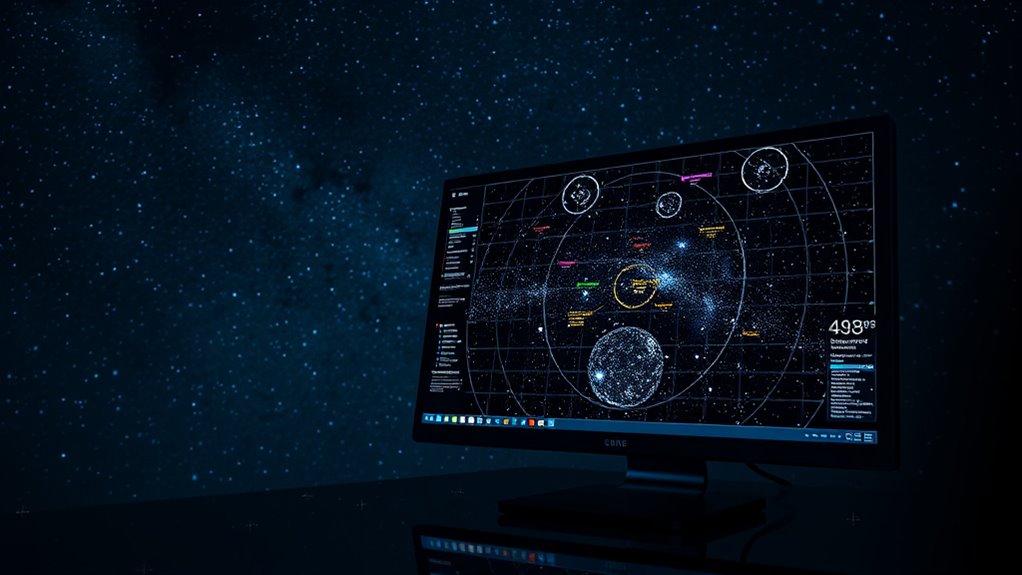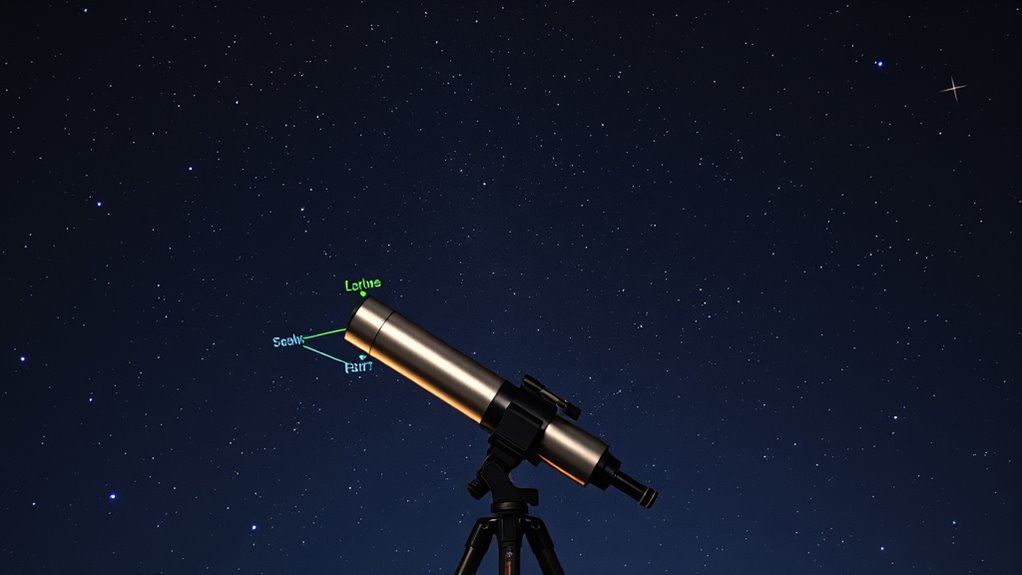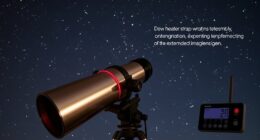When you add labels and astrometric data during image annotation, you help machines better understand visual elements and their spatial context. This process involves not only placing object labels, bounding boxes, or polygons but also including critical metadata like celestial coordinates for specialized datasets. Accurate annotations improve model performance and enable more sophisticated insights. Continuing with this approach guarantees your datasets become more informative and valuable for advanced AI applications.
Key Takeaways
- Image annotation involves adding labels to identify objects, patterns, or features within visual data for machine learning.
- Incorporating astrometric data, like celestial coordinates, enhances annotations for astronomical images.
- Annotation tools support various label types, including bounding boxes, polygons, and metadata, to improve dataset richness.
- Accurate labeling and metadata integration are essential for training precise and reliable AI models.
- Consistent annotation practices, including astrometric information, enable better pattern recognition in specialized datasets.

Image annotation is a crucial process that involves labeling elements within a visual that helps computers understand and interpret images. When you’re working with machine learning, this step becomes essential because it transforms raw images into structured data that algorithms can learn from. Accurate annotation ensures that your model can recognize objects, patterns, and details within images, making it a cornerstone of developing effective AI systems. As you prepare your dataset, keep in mind that quality annotations directly influence the performance of your machine learning models.
In the context of dataset preparation, image annotation acts as the bridge between raw data and meaningful insights. You start with a collection of images, which on their own are meaningless to a machine. By adding labels—such as bounding boxes, polygons, or semantic tags—you give each image a layer of context. This process requires precision because inconsistent or inaccurate labels can mislead the model, resulting in poor predictions or classifications. As you annotate, you’re essentially teaching the machine what to look for and how to interpret visual cues, which is fundamental for supervised learning techniques.
The choice of annotation tools can greatly impact your workflow. Some tools offer simple interfaces for bounding boxes, while others support more complex annotations like segmentation masks or keypoints. Your goal is to select a tool that aligns with your project’s needs, enabling you to annotate efficiently while maintaining high accuracy. During annotation, it’s important to follow consistent guidelines to ensure uniformity across your dataset. This consistency helps the machine learning model generalize better when it encounters new, unseen data.
Moreover, annotating images isn’t just about labeling visible objects; it also involves adding metadata that enhances the understanding of each image. For example, including astrometric data—such as celestial coordinates—can enrich datasets used in astronomical imaging. This additional information allows models to interpret spatial relationships or identify specific locations within a visual field. When preparing datasets with such detailed annotations, you help the machine learn more nuanced patterns and improve its predictive capabilities.
Ultimately, effective image annotation is a meticulous but rewarding process. It demands attention to detail and thoughtful organization, especially when preparing large datasets for machine learning. Properly annotated images not only boost model accuracy but also streamline training and validation phases. By investing time in precise and consistent annotation, you set the foundation for robust AI applications capable of understanding complex visuals, whether in everyday object recognition or specialized fields like astronomy.
Frequently Asked Questions
How Does Astrometric Data Improve Image Annotation Accuracy?
Astrometric data improves your image annotation accuracy by providing precise celestial referencing, which helps you pinpoint object locations with greater coordinate precision. When you incorporate this data, you can accurately match stars or galaxies to known positions, reducing errors. This clarity guarantees your labels align correctly with the celestial objects, making your annotations more reliable and meaningful. Ultimately, astrometric data enhances your ability to analyze and interpret astronomical images effectively.
What Tools Are Best for Adding Labels and Astrometric Data?
You’d be crazy not to use first-rate labeling software like Labelbox or CVAT, paired with machine learning tools that automate the tedious stuff. These tools make adding labels and astrometric data a breeze, boosting accuracy while saving you from manual chaos. With intuitive interfaces and AI-powered features, you’ll quickly turn raw images into precisely annotated datasets, making your analysis sharper and more reliable—because who needs human error when technology’s this good?
Can Image Annotation Be Automated for Large Datasets?
Yes, you can automate image annotation for large datasets using machine learning. You’ll want to train models on your dataset curation efforts, enabling the system to identify and label features consistently. This approach speeds up the process, reduces manual effort, and improves accuracy over time. Just make certain you validate and refine your models regularly, so your annotations stay precise as your dataset grows and evolves.
How to Handle Ambiguous or Overlapping Labels in Images?
Did you know that around 30% of image annotations face issues with ambiguous or overlapping labels? To handle this, you should establish a clear label hierarchy, prioritizing the most relevant labels. Use contextual ambiguity to your advantage by analyzing surrounding data, which helps disambiguate overlaps. Implementing these strategies streamlines your annotation process, reducing errors and making your dataset more accurate and useful for machine learning models.
What Are Common Challenges in Annotating Astronomical Images?
You face challenges like pixel distortion, which can misrepresent star positions, making accurate annotation difficult. Maintaining labeling consistency across vast datasets is also tough, especially when dealing with faint or overlapping objects. These issues require careful calibration and standardized protocols to guarantee your annotations remain precise and reliable, ultimately supporting better analysis and interpretation of astronomical images.
Conclusion
By now, you see how image annotation transforms raw images into valuable data, enhancing analysis and understanding. Did you know that over 80% of data used for machine learning relies on accurate image labels? This highlights the importance of precise annotation in advancing AI. So, next time you label an image, remember you’re contributing to a technology that’s shaping the future, making your efforts more impactful than you might think.









